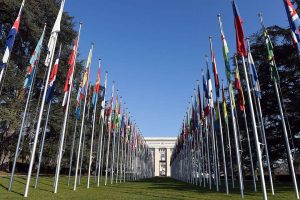23 November 2018: Delegates at the second meeting of the Conference of the Parties (COP2) to the Minamata Convention on Mercury agreed on the permanent arrangements for a stand-alone Secretariat, to be based in Geneva, Switzerland. Among other decisions, the COP also approved the Memorandum of Understanding (MoU) with the Global Environment Facility (GEF).
The Minamata Convention bans new and phases out existing mercury mines, contains measures to control trade, releases, and air emissions, and regulates the informal sector of artisanal and small-scale gold mining.
Delegates at COP1, which met in September 2017, had decided that the Secretariat would remain in Geneva under the purview of UN Environment’s Chemicals and Wastes branch until a review of the arrangements at COP2. COP1 had also been unable to agree on the MoU with the GEF, and put the decision off until COP2.
Among the other decisions taken at COP2 were agreements related to: cooperation with the Basel, Rotterdam and Stockholm (BRS) Conventions; rules of procedure for the Implementation and Compliance Committee; mercury waste thresholds; harmonized customs codes; contaminated sites; interim storage; capacity building, technical assistance, and technology transfer; and effectiveness evaluation.
Decisions on open burning, a review of the financial mechanism, and a review of Annexes A (mercury-added products) and B (manufacturing processes in which mercury or mercury compounds are used) were put off until COP3.
COP2 took place from 19-23 November 2018, in Geneva. Delegates agreed that COP3 would convene in Geneva, in the absence of another offer, from 25-29 November 2019. [IISD RS Coverage of COP2] [SDG Knowledge Hub Summary of COP1]

